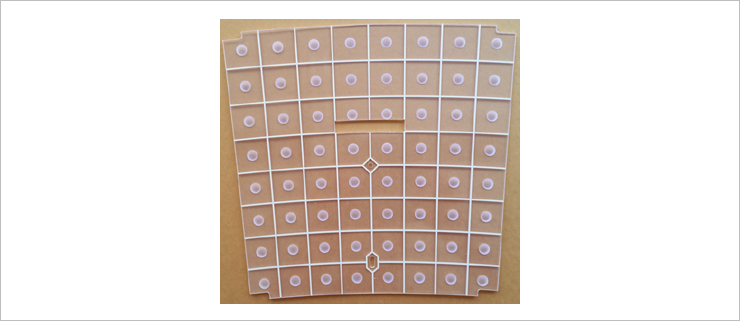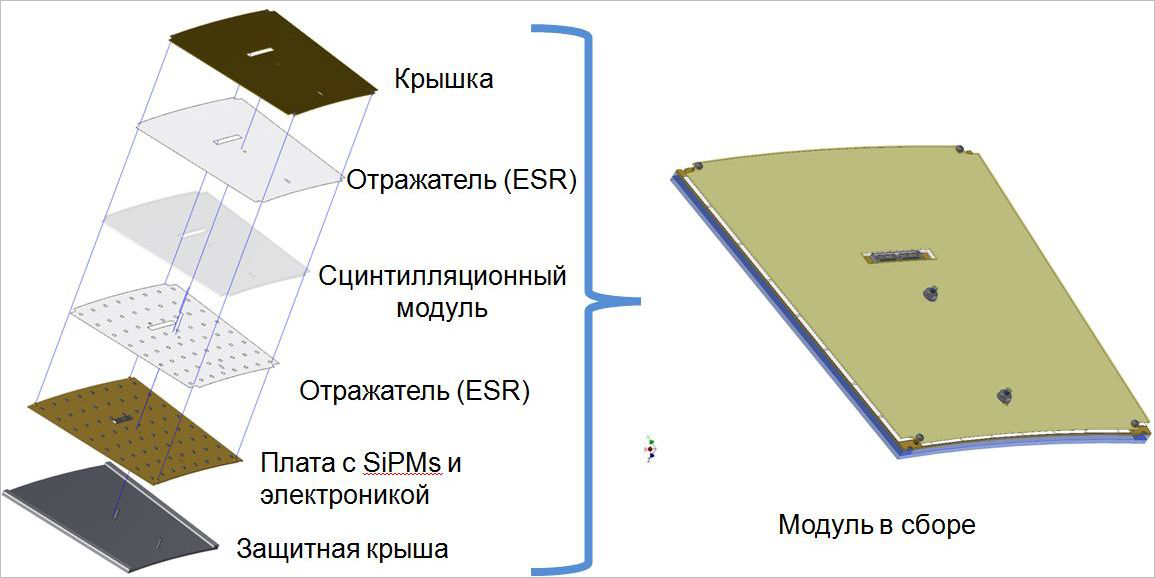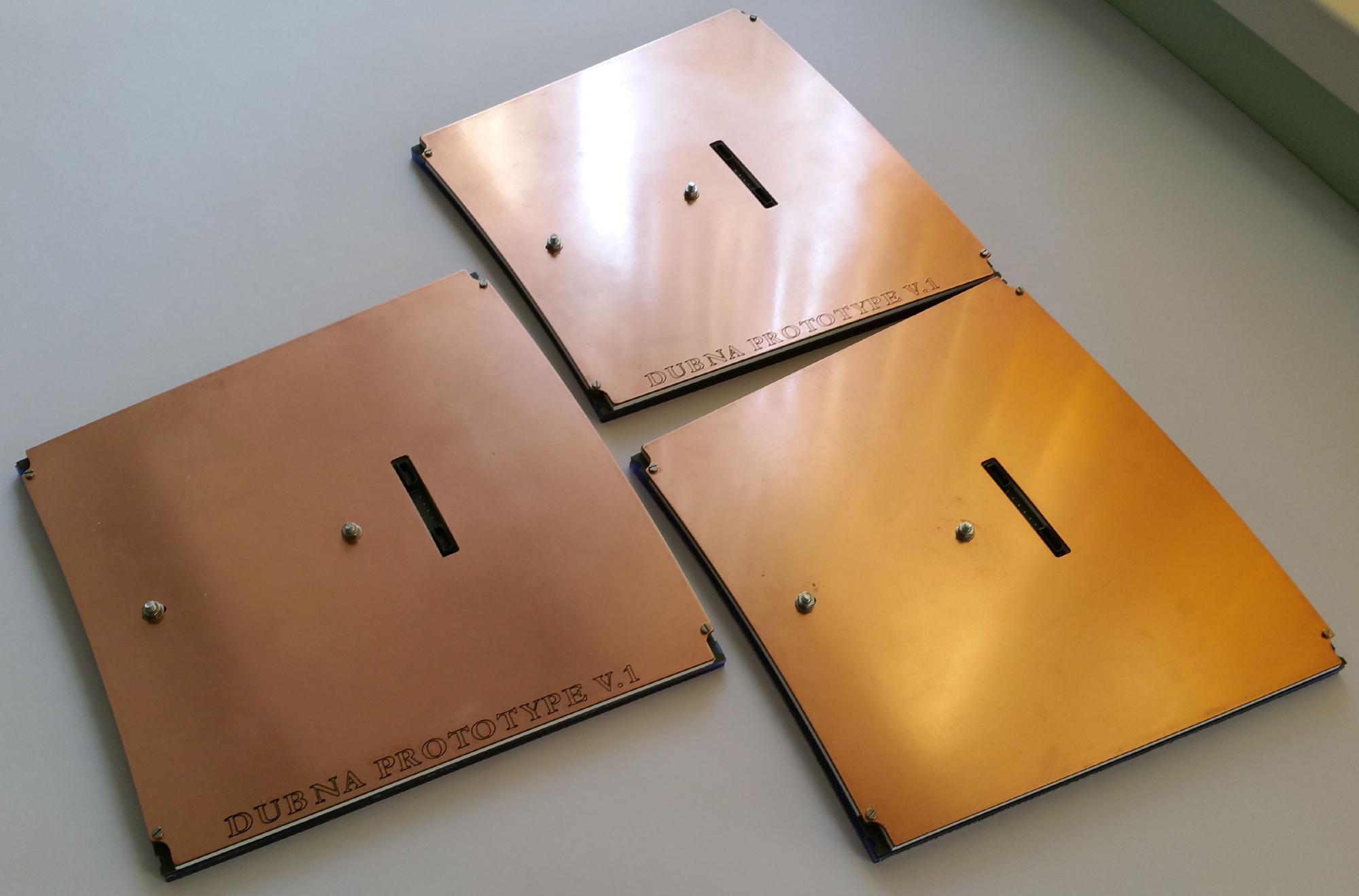New Design of the Scintillation Detector
Patents, 22 June 2021
On 19 May 2021, the Joint Institute for Nuclear Research received a patent for a new design of a scintillation detector. By changing the traditional construction, the JINR scientists have achieved high technological efficiency in manufacturing and assembly of detectors. According to the authors, the technical result of this will be an increase in the accuracy of spatial measurements for large detection areas.
The authors of the invention are Sergey Vladimirovich Afanasiev, Andrey Yurievich Boyarintsev, Alexander Olegovich Golunov, Igor Anatolyevich Golutvin, Nikolai Vasilyevich Gorbunov, Boris Viktorovich Grinev, Yuri Vladimirovich Ershov, Alexander Ivanovich Malakhov, Vitaly Anatolyevich Smirnov, Evgeny Viktorovich Sukhov, Valentin Valeryevich Ustinov.
The invention relates to the field of ionizing radiation detection technology using segmented scintillation detector modules (detectors) and can be applied in its various industries:
- in medical technology, in particular, in positron emission tomography, single-photon emission computed tomography, mass spectroscopy, and high-performance liquid chromatography;
- in introscopy systems for remote inspection;
- in high-energy physics, for example, in scintillation detectors for experiments on linear accelerators and colliders.
Currently, scintillation detectors based on single scintillation cells put together into modules are widely used. The modules are assembled from single scintillation cells, usually square-shaped with sides of 20-30 mm and 3-5 mm thick, with a reflective coating applied or wrapped in a reflective material, sequentially element-by-element combined with silicon photodetectors. The technical characteristics of such detectors essentially depend on how the scintillation cells and photodetectors are positioned in the detector, as well as on the characteristics of the light-reflective surfaces around the scintillator. For high-quality packaging of scintillation cells in reflective material (film), robotic packaging equipment similar to that of candy factories is required. To install wrapped cells onto printed circuit boards, robotics is also commonly used. All this is both expensive and can only be implemented for large-scale production.
The inventors decided to change the traditional approach to the scintillation detector design:
- instead of a set of single cells, a monolithic construction of a scintillation block is used, which has a cellular structure formed with the help of reflective separators along the perimeter of the cells inside the block and lined with reflector sheets on both sides;
- all the accuracy of the relative position of the detector parts is achieved during the manufacture of its components on universal computer numerical control (CNC) machines;
- assembly of the module is reduced to a simple screwing of the component parts.
 Monolithic scintillation block
Monolithic scintillation block
To collect light, in the detector proposed by the team of authors silicon photodetectors (SiPMs) located on a printed circuit board are used.
The array of single scintillation cells with dimples for collecting light is presented in the form of a monolithic block. The block is made of a solid scintillator sheet. A special technology for manufacturing scintillation blocks has been developed at the Institute of Scintillation Materials (ISMA), Kharkov. It allows one to make cells of any geometric shape by cutting grooves along the perimeter of the cells and then filling them with an epoxy doped reflective material. The reflectors are two separate sheets of ESR reflective material. The reflector for the surface of the block with dimples has holes for the passage of light focused in the dimple in the direction of the photodetectors paired to them. The second reflector is made solid. The scintillation block, the printed circuit board with an array of silicon photodetectors, reflective screens, and the cover of the detector module have base holes for precise alignment of the detector components with fasteners during assembly.
As a result, the authors have created a module that, in addition to the necessary parameters, has high technological efficiency in manufacturing and assembly. At the same time, the manufacturing technology is such that it allows one to easily produce any number of modules, from a few pieces to hundreds and thousands.
The cellular structure of the scintillator module makes it possible to register particles with the creation of an image of interaction in three-dimensional space, and the monolithic structure of the whole construction allows one to achieve the positioning of all detector layers with precision accuracy. In particular, such detectors are promising for spectrometers of the NICA complex. Longitudinal and transverse segmentation of the detectors based on the invention allows efficient separation of neutrons and gamma quanta without degrading the energy and temporal resolution.


